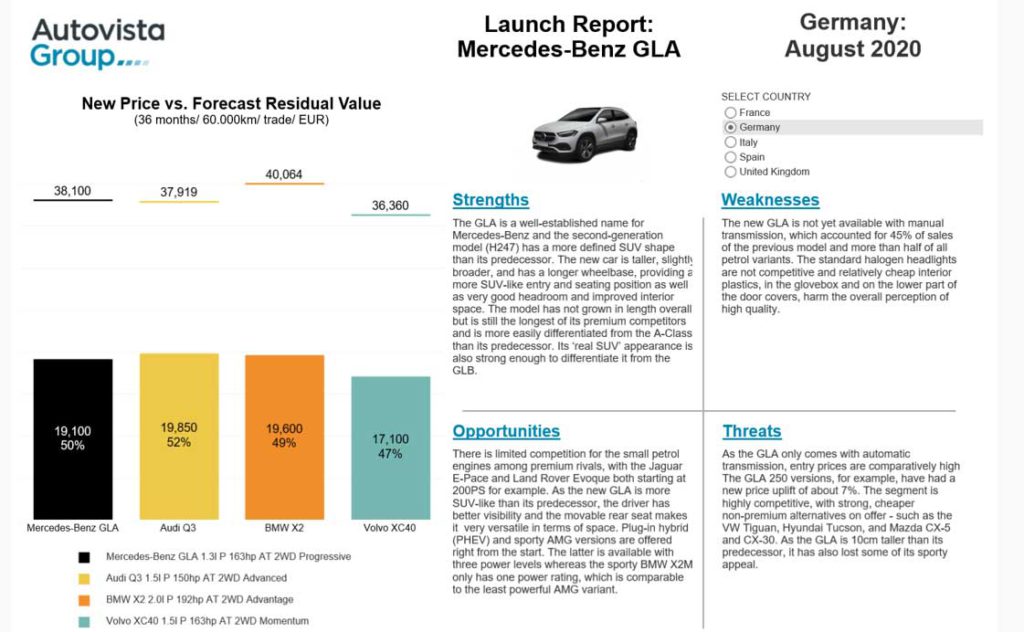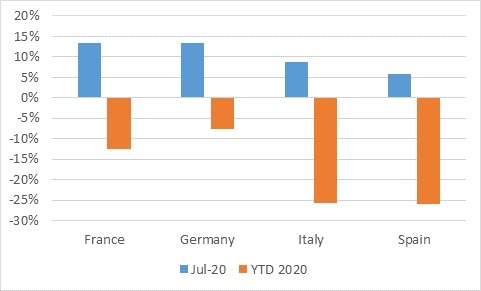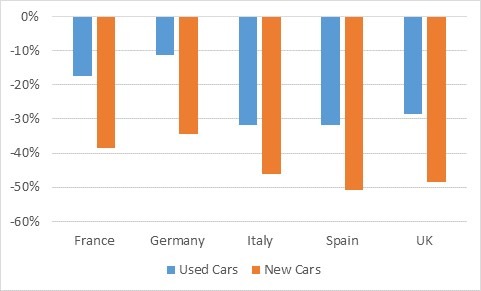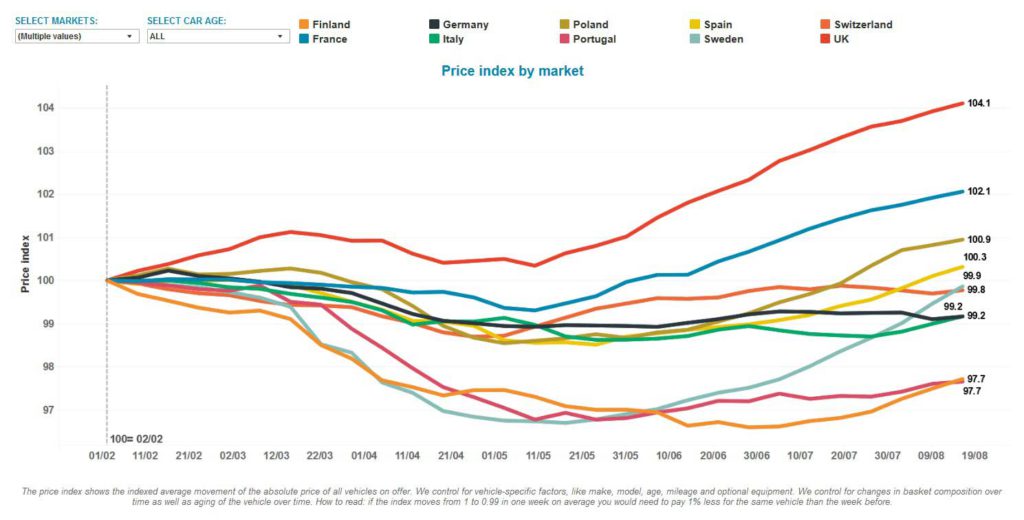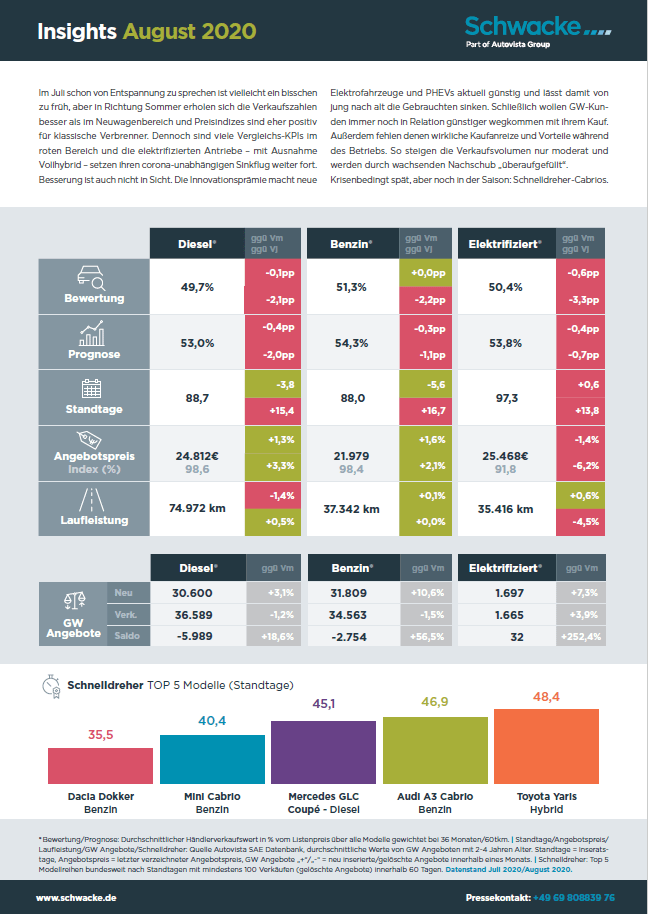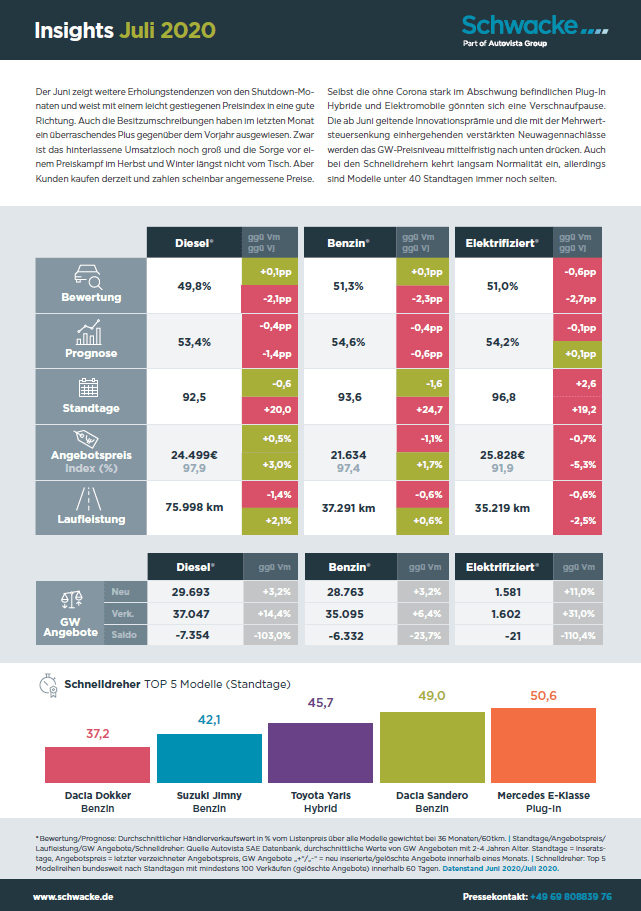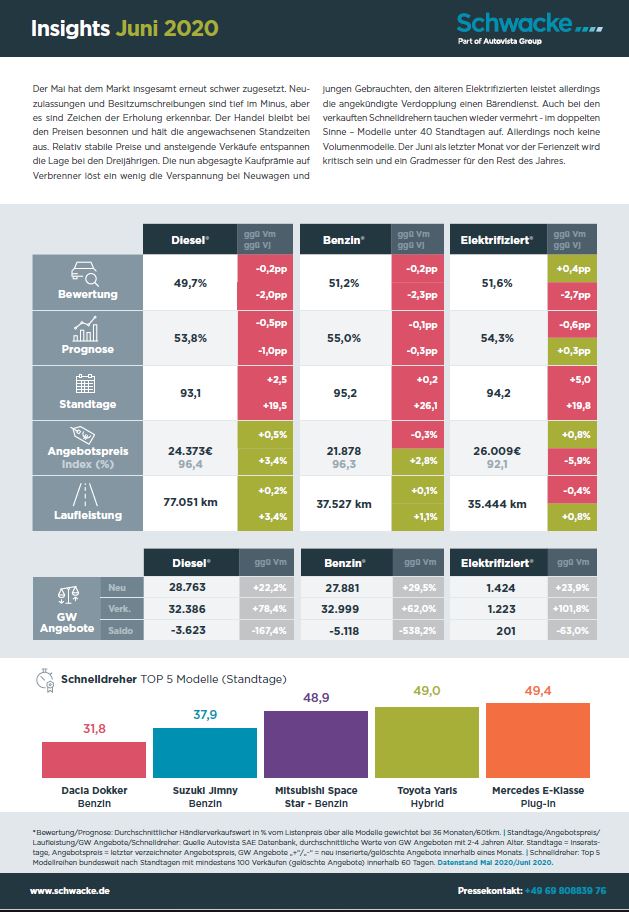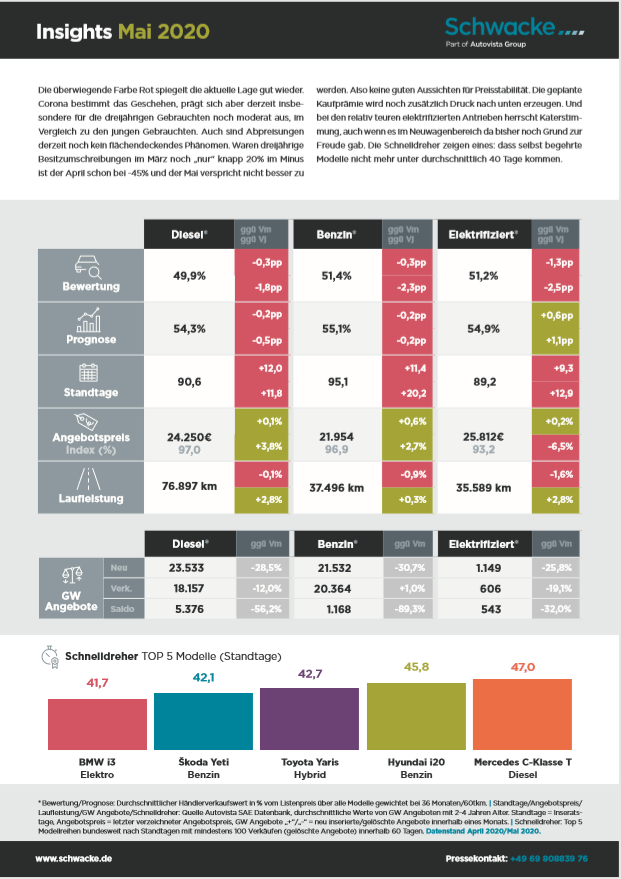As the coronavirus (COVID-19) situation across Europe remains fluid, and infection rates start to rise again, many of the continent’s key automotive markets are still expecting a slow, u-shaped recovery, despite recent rebounds in economic activity. The potential for a v-shaped recovery is diminishing with a second wave coming in.
With cases starting to rise across the continent, it is likely that the automotive market will again be affected in some way – either through new lockdowns, restrictions in manufacturing or an impact on consumer confidence when it comes to large purchases. The new-car market saw sales rise following the lifting of lockdowns, as pent-up demand drove customers to dealerships. However, this demand has now waned. Incentive schemes are still helping to keep some markets afloat.
In June 2020, economic trade value was only 10% below levels seen in February, highlighting the beginning of economic recovery – a process that took eight months to begin in the financial crisis of 2008-2009. Shipping activity in the US, Asia and Europe had also normalised to previous levels in August.
In addition, an economic sentiment indicator, published by the EU commission has grown in the Eurozone, to 87.7 in August from 82.4 in July. However, in the UK it has slid to 75.1 from 75.5 in the same period.
Risk potential
Some of this economic rebound could be short-lived, as current consumer behaviour is driven by pent-up demand, and there is a risk that joblessness increases in coming months as furlough schemes come to an end. This will suppress spending. The pace of recovery should slow down.
Autovista Group’s European research and analysis on the economic impact of the pandemic on Europe’s used-car markets and residual values (RVs) was discussed in a recent web seminar.
Six of the company’s top experts came together in an online discussion chaired by Autovista Group Daily Brief editor Phil Curry, discussing how markets are reacting to the COVID-19 downturn and the scenarios that some countries may find themselves in. You can watch the entire seminar broadcast below.
In a poll held during the pan-European conference, 45% of attendees felt the automotive market would see a slow, u-shaped recovery. This showed a drop in confidence compared to an identical poll held during July, where 55% felt this path would be the most likely scenario. The most significant increase in likelihood scenarios came in the ‘deep recession, slow recovery’ category, where 34% felt this path would be the most likely outcome of the COVID-19 impact on the automotive market, compared to just 14% in July. This increase could be down to the threat of a second wave of infections, with many countries across the continent starting to see cases rise, a situation that might lead to further lockdowns or restrictions.
Robert Madas, valuations and insights manager Austria & Switzerland, Eurotax, noted that in Austria, new car sales had suffered, 33% down year-to-date. At the same time, the used-car market is also off-track, with an 8.2% decline in the first seven months of the year. However, government electric vehicle (EV) purchase incentives have stimulated demand for plug-in hybrids (PHEVs) and battery-electric vehicles (BEVs). Switzerland is seeing a similar pattern, although used-car sales have only declined by 3.5% in the same seven-month period.
Purchasing power uncertainty
‘Asking prices in the used-car market have decreased after the lockdown, but we have now seen a recovery to pre-coronavirus levels,’ Madas commented. ‘However, in both markets, there is uncertainty regarding purchasing power and general economic outlook. Higher discounts and government incentives for new EVs will affect used-car values in Austria.’
Zsolt Horvath, operations manager at Eurotax Hungary, highlighted that the Central European region saw less-severe lockdown conditions than Western Europe, leading to less impact on RVs in the area. However, he added that car-rental companies had suffered due to cancellations, and supply of used-cars had also been impacted due to border restrictions. With a potential second wave incoming, the likelihood of a slow u-shaped recovery in the region has increased from 35% to 45%.
Yoann Taitz, operations and valuations director at Autovista France, pointed to the country’s strong market recovery since June in both the new and used-car markets, mainly due to the country’s COVID-19 recovery plan. Used-cars saw sales growth of 29.2% in June as pent-up demand helped the market, with a 12.1% increase in July and 15.6% in August, leaving the sector down just 9.6% year-to-date.
The government incentive scheme has led to a positive RV impact, since it supported also the purchase of used cars. However, some risks remain, especially with EV sales, as growth will be driven by the new-car market, and coupled with an increase in grants for their purchase, any supply stronger than demand would negatively impact EV RVs.
In Italy, Marco Pasquetti, forecast & data specialist at Autovista Italy, pointed to the country’s gloomier economic outlook, with GDP likely to be down 11.2%, as a significant impact on the automotive market, with a 65% probability of a medium-risk, slow u-shaped recovery. The market will likely see pent-up demand continue to drive sales, however, due to longer lockdowns and a drop in public transport use, estimated at around 35%-40% compared to pre-COVID-19 usage.
Johan Trus, head of data and valuations Nordics at Autovista, discussed the situation in Finland and Sweden, where no lockdown was observed, and dealerships remained open. Both markets have been in recovery since April, with a high demand for used-cars when people were asked to avoid public transport when commuting.
With various parameters for different scenarios taken into account, including a potential second wave of infections, continuing fluctuations in GDP, supply issues and country-specific factors, the landscape for scenarios in all countries is continuously changing. Autovista Group experts continue to monitor developments and will update their expectations accordingly.
You can find the information presented in the Autovista Group web seminar here. There are further details in the whitepaper: How will COVID-19 shape used-car markets?

 Schließen
Schließen